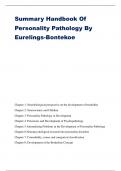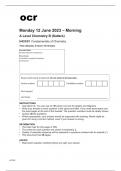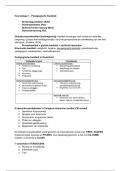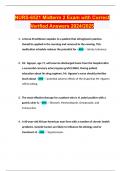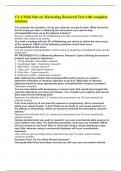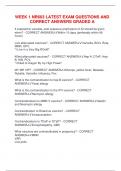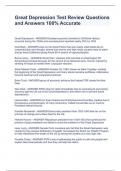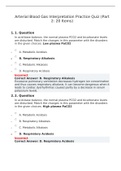Samenvatting
Summary Handbook Of Personality Pathology By Eurelings-Bontekoe
- Vak
- Instelling
Summary Handbook Of Personality Pathology By Eurelings-Bontekoe Chapter 1: Neurobiological perspective on the development of borderline Chapter 2: Neuroscience and Children Chapter 3: Personality Pathology in Development Chapter 4: Precursors and Development of Psychopathology Chapter 5: Inter...
[Meer zien]
